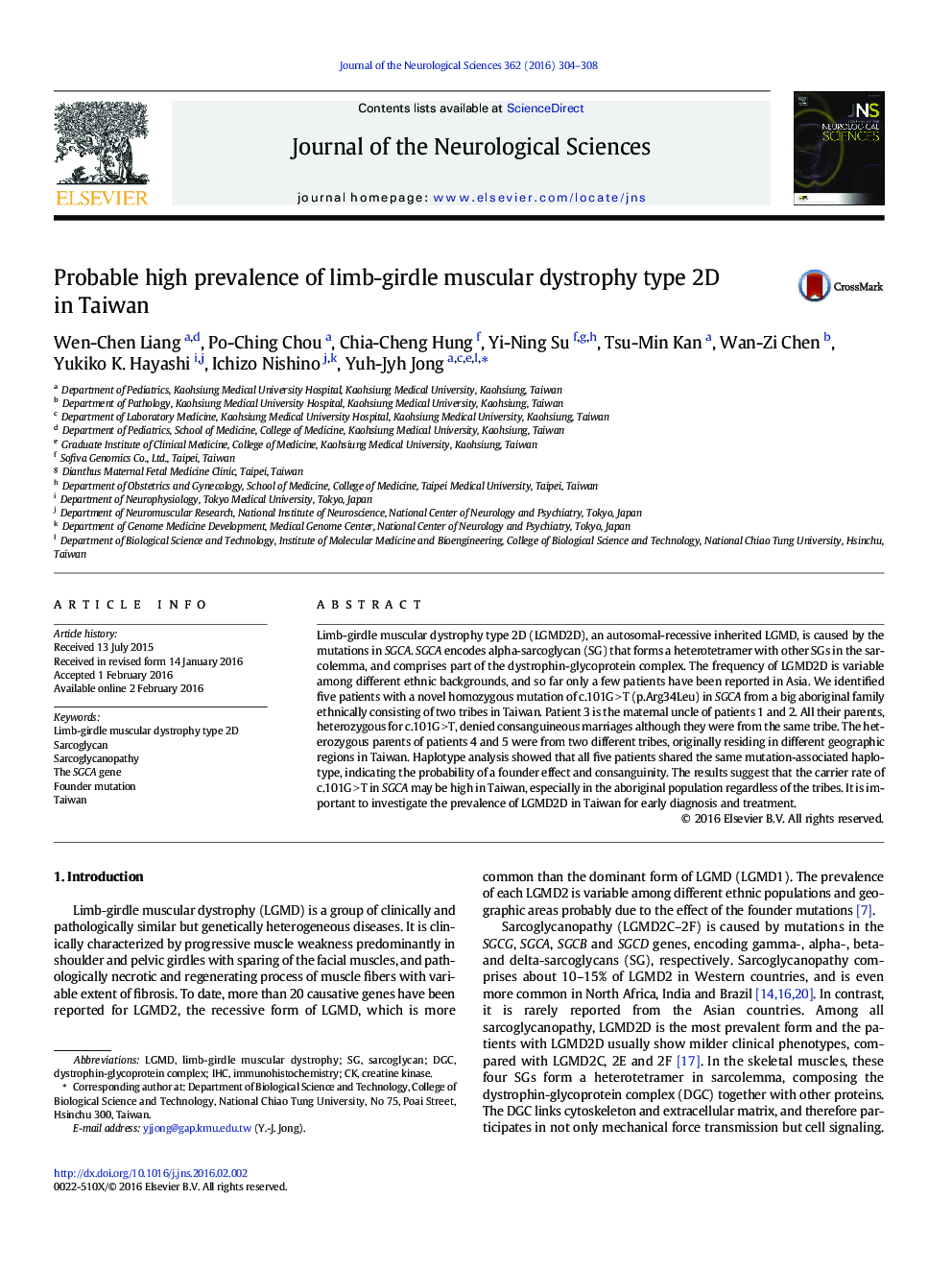| Article ID | Journal | Published Year | Pages | File Type |
|---|---|---|---|---|
| 1913072 | Journal of the Neurological Sciences | 2016 | 5 Pages |
•Sarcoglycanopathy, including limb-girdle muscular dystrophy 2D–2F is very rare in Asia.•Intrafamilial phenotypic variety is wide in LGMD2D.•c.101G > T in SGCA is most likely a founder mutation in the aboriginal population of Taiwan.
Limb-girdle muscular dystrophy type 2D (LGMD2D), an autosomal-recessive inherited LGMD, is caused by the mutations in SGCA. SGCA encodes alpha-sarcoglycan (SG) that forms a heterotetramer with other SGs in the sarcolemma, and comprises part of the dystrophin-glycoprotein complex. The frequency of LGMD2D is variable among different ethnic backgrounds, and so far only a few patients have been reported in Asia. We identified five patients with a novel homozygous mutation of c.101G > T (p.Arg34Leu) in SGCA from a big aboriginal family ethnically consisting of two tribes in Taiwan. Patient 3 is the maternal uncle of patients 1 and 2. All their parents, heterozygous for c.101G > T, denied consanguineous marriages although they were from the same tribe. The heterozygous parents of patients 4 and 5 were from two different tribes, originally residing in different geographic regions in Taiwan. Haplotype analysis showed that all five patients shared the same mutation-associated haplotype, indicating the probability of a founder effect and consanguinity. The results suggest that the carrier rate of c.101G > T in SGCA may be high in Taiwan, especially in the aboriginal population regardless of the tribes. It is important to investigate the prevalence of LGMD2D in Taiwan for early diagnosis and treatment.
